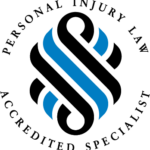Certain personal injury cases in NSW requiring the proving of negligence. Negligence is a principle originally established in common law and now modified and enshrined in state and territory legislation across Australia. Although the legal definition of negligence changes slightly across jurisdictions, it is always based on the concepts of duty of care, breach of duty, harm, and causation. This article provides an overview of how these concepts work together to enable an individual to successfully prove negligence in a personal injury case. The information is general only and we recommend you obtain professional advice relevant to your circumstances.
- What is a Personal Injury?
- Definition: A personal injury is any physical, psychological, or emotional harm suffered by an individual.
- Eligibility for Compensation: Not every personal injury will entitle you to compensation in a personal injury claim. Not every claim will require you to prove negligence, however for those that do, to be successful in such a claim under Australian law, the harm must result from the negligence of another party.
- Exceptions: If someone is injured but no one else is at fault, the injured person is not entitled to compensation through a personal injury claim, regardless of the seriousness of the harm they have experienced. However, the same injury may be compensable under different legislation. For instance, if the injury was incurred while at work, there are specific schemes that exist which may provide compensation. This is why it is important to obtain legal advice.
- What is a Duty of Care?
- Definition: To successfully prove negligence, the first element that must be established is that a duty of care existed between the injured party and the party responsible for the injury (who would become the defendant in the personal injury case). A duty of care is a legal obligation owed by one party to avoid causing foreseeable harm to another party.
- Contexts: A duty of care can arise in various contexts. Examples include:
- Employers to Employees: Employers owe a duty of care to their employees.
- Teachers to Students: Teachers owe a duty of care to their students.
- Doctors to Patients: Doctors owe a duty of care to their patients.
- Foundation of Negligence Claims: The existence of this vulnerability means that the party with more power or control is beholden to exercise a reasonable amount of care to ensure that harm does not come to the vulnerable party. This forms the foundation upon which negligence claims are built.
- What is a Breach of Duty of Care?
- Definition: Following the establishment of a duty of care, the next step in a personal injury case is to prove that the defendant failed to do what was required of them considering this duty.
- Standard of Care: This entails demonstrating that the defendant failed to meet the standard of care expected in a particular set of circumstances.
- Factors: What constitutes a breach of duty depends on factors such as the foreseeable risks of a situation, industry standards, and the specific duties owed.
- Proving Breach: It involves proving that the defendant’s actions – or inactions – fell below the acceptable standard of care, thereby breaching their duty.
- What Constitutes Harm?
- Definition: The third element of a negligence claim is to establish that the plaintiff (the person bringing the claim) has suffered harm.
- Types of Harm: This harm includes both the actual injuries suffered by the plaintiff, as well as the loss that results from these injuries.
- Examples: For instance, the original injury may have been a broken leg, but the loss from that injury may include the plaintiff’s medical expenses, the costs of having in-home care, and the loss of income and superannuation if the plaintiff cannot work for a period of time.
- What is Causation?
- Definition: Causation is the final step in proving negligence in personal injury cases.
- Establishing a Link: This requires the injured party to establish a direct link between their injuries and the defendant’s breach of duty.
- Evidence: This causal connection must be established by factual evidence demonstrating that the defendant’s negligence was a substantial factor in bringing about the plaintiff’s harm.
- What is the Process of a Personal Injury Case?
- Evidence Collection: Central to building a compelling personal injury case is the collection of evidence. This involves gathering documentation such as medical records, witness statements, photographs of the accident scene, and any other relevant material that corroborates the plaintiff’s version of events and substantiates their injuries.
- Procedural Requirements: It is essential to follow procedural requirements and pre-action protocols. This includes:
- Statutory Time Limits: Complying with statutory time limits for commencing proceedings.
- Alternative Dispute Resolution: Participating in alternative dispute resolution processes where required.
- Pre-Action Steps: Adhering to any pre-action steps prescribed by the court or relevant legislation.
- Medical Appointments: Plaintiffs must also prioritize attending medical appointments, rehabilitation sessions, and any other recommended treatments aimed at mitigating their injuries. Failing to follow medical advice or neglecting appointments could potentially undermine the credibility of an injured person’s claim and impact the quantum of damages awarded.
- Will I Need Professional Help?
- Legal Support: Engaging an experienced lawyer who is an Accredited Specialist in Personal Injury Law can provide invaluable support and guidance throughout a personal injury matter.
- Medical Assessment: It is usually necessary to consult medical professionals to assess and document the extent of injuries to establish the evidentiary foundation of a claim.
- Securing Compensation: By seeking the right professional assistance, injured parties can help secure the compensation they rightfully deserve.
If you or someone you know wants more information or needs help or advice, please contact Rita Palazzolo on 0404 09 33 74 or email rita@rplawyer.com.au.


